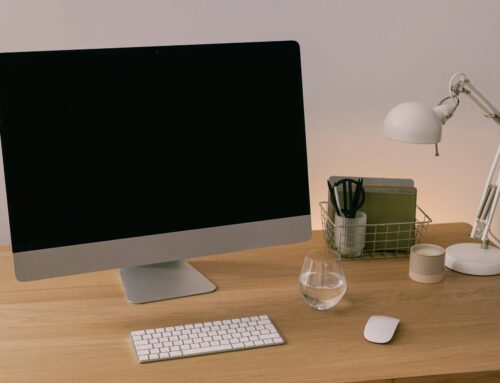Desktop computers are essential for both work and leisure, but slow performance can turn simple tasks into tedious chores. Many users experience lagging or unresponsive systems that leave them frustrated and impatient. Fortunately, understanding the reasons for these slowdowns can help find effective solutions.
This guide will explore practical fixes that address common issues, giving your desktop the breath of fresh air it needs. Discover how small changes can improve your computer’s performance, allowing you to enjoy a faster and smoother experience.
Identifying Causes of Slow Performance
Understanding why your desktop might be running slow is crucial to finding the right solution. Common culprits include software bloat, outdated hardware, and insufficient RAM. Software bloat happens when too many programmes are installed or running, consuming valuable resources unnecessarily. Over time, these programmes accumulate and slow down your system. Outdated hardware, like an old processor or limited RAM, struggles to keep up with modern software demands, further contributing to sluggish performance.
Background processes and unnecessary startup programmes also significantly affect speed. Many applications set themselves to launch at start-up, which increases load time and occupies memory. These processes often run in the background, consuming resources even when not used actively.
To tackle these issues, use Task Manager to monitor your system. Open Task Manager by pressing “Ctrl + Shift + Esc.” This tool displays processes running on your computer and the resources they consume. Pay attention to the CPU and memory usage to identify any resource-hogging applications. Once identified, you can end these tasks or remove them from startup items, thus freeing up vital resources.
By recognising these symptoms and understanding their causes, you can take practical steps to address slow performance and improve your desktop’s efficiency.
Freeing Up Resources and Storage
Freeing up resources and managing storage can significantly improve your desktop’s speed. To optimise performance, begin with simple cleaning and organisation.
1. Organise Files and Folders
– Sort through files and delete those you no longer need.
– Create specific folders to keep important documents in order.
– Regularly clean the Downloads folder.
2. Clear Cache and Temporary Files
– Open “Settings” and navigate to “System” or “Performance.”
– Use built-in tools like “Disk Cleanup” to remove temporary files.
– Clear browser cache through browser settings to free memory.
3. Uninstall Unnecessary Applications
– Go to “Control Panel” and select “Programs and Features.”
– Review the list and remove programs you no longer use.
4. Defragment the Hard Drive
– Open “File Explorer,” right-click the drive you wish to defragment, and select “Properties.”
– Under the “Tools” tab, click “Optimise” to start defragmentation.
– This rearranges fragmented data, speeding up access times.
These steps create space and streamline processes, allowing your desktop to operate more efficiently. Regular maintenance, like organising files and clearing out temporary data, helps maintain optimal speed over time.
Updating and Optimising System Settings
Keeping your desktop’s system settings updated and optimised is key to maintaining smooth and efficient performance. Regular updates to your operating system and drivers ensure your desktop can handle new applications and security requirements. To check for updates, go to the “Settings” menu and select “Update & Security.” Follow the prompts to install any available updates for your OS and drivers. This keeps your system running efficiently and securely.
Adjustments to visual effects and power settings can also enhance speed. Reducing unnecessary visual effects, such as animations and transparencies, can free up resources for more important tasks. Access these settings by searching for “Performance” in the Control Panel and selecting “Adjust the appearance and performance of Windows.” Choose “Adjust for best performance” or customise settings based on your preference.
Power settings also affect performance. By adjusting these settings, you can prioritise speed over energy savings. In the Control Panel, navigate to “Power Options” and select a performance-focused plan.
Performance-enhancing software tools can help optimise your system further. These tools assist in managing memory usage and cleaning up the registry, which can significantly boost performance. Choose reputable tools and run them periodically to maintain optimal system health.
Considering Hardware Upgrades
If software adjustments aren’t enough, hardware upgrades might be necessary to boost your desktop’s performance. Upgrading components like RAM or storage can substantially impact, especially if you’re using older hardware.
Upgrading RAM is a straightforward solution that provides immediate benefits. More RAM means better multitasking capability and smoother operation. It’s a relatively inexpensive way to breathe new life into an ageing machine.
Switching from a traditional hard disk drive (HDD) to a solid-state drive (SSD) offers significant speed improvements. SSDs provide faster read and write speeds, resulting in quicker boot times and faster file access. Though more costly than RAM upgrades, their impact on performance is considerable.
Consider the signs that indicate a need for hardware replacement or professional help. Frequent crashes, constant slowdowns, and unusual noises from the hard drive may suggest impending failure. In such cases, expert assistance can ensure the right solutions are applied without causing further damage.
Conclusion
Improving your desktop’s performance involves a combination of software tweaks and potential hardware upgrades. You can apply targeted fixes that restore efficiency by identifying the root causes of speed issues. Regular maintenance, such as updating software and organising files, goes a long way in preventing future slowdowns. When necessary, consider practical hardware updates to enhance performance further and extend the lifespan of your desktop.
If your desktop is persistently slow despite your best efforts, it may be time to consult professional desktop computer repair. Bring your device to Forest City Computer Repairs for a comprehensive analysis and tailored solutions. Our experts are prepared to address desktop concerns and optimise your machine for a seamless computing experience.







